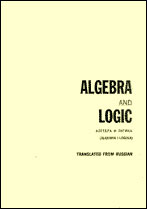|
A Characterization of Alternating Groups. II
V. D. Mazurov
Sobolev Institute of Mathematics, Siberian Branch of the Russian Academy of Sciences
Abstract:
Let $G$ be a group. A subset $X$ of $G$ is called an $A$-subset if $X$ consists of elements of order 3, $X$ is invariant in $G$, and every two non-commuting members of $X$ generate a subgroup isomorphic to $A_4$ or to $A_5$. Let $X$ be the $A$-subset of $G$. Define a non-oriented graph $\Gamma(X)$ with vertex set $X$ in which two vertices are adjacent iff they generate a subgroup isomorphic to $A_4$.
Theorem 1 states the following. Let $X$ be a non-empty $A$-subset of $G$. (1) Suppose that $C$ is a connected component of $\Gamma(X)$ and $H=\langle C\rangle$. If $H\cap X$ does not contain a pair of elements generating a subgroup isomorphic to $A_5$ then $H$ contains a normal elementary Abelian 2-subgroup of index 3 and a subgroup of order 3 which coincides with its centralizer in $H$. In the opposite case, $H$ is isomorphic to the alternating group $A(I)$ for some $($possibly infinite$)$ set $I$, $|I|\geqslant 5$. (2) The subgroup $\langle X^G\rangle$ is a direct product of subgroups $\langle C_\alpha\rangle$ generated by some connected components $C_\alpha$ of $\Gamma (X)$.
Theorem 2 asserts the following. Let $G$ be a group and $X\subseteq G$ be a non-empty $G$-invariant set of elements of order 5 such that every two non-commuting members of $X$ generate a subgroup isomorphic to $A_5$. Then $\langle X^G\rangle$ is a direct product of groups each of which either is isomorphic to $A_5$ or is cyclic of order 5.
Keywords:
alternating group, non-oriented graph.
Received: 12.09.2005
Citation:
V. D. Mazurov, “A Characterization of Alternating Groups. II”, Algebra Logika, 45:2 (2006), 203–214; Algebra and Logic, 45:2 (2006), 117–123
Linking options:
https://www.mathnet.ru/eng/al142 https://www.mathnet.ru/eng/al/v45/i2/p203
|


| Statistics & downloads: |
| Abstract page: | 503 | | Full-text PDF : | 138 | | References: | 70 | | First page: | 10 |
|





 Contact us:
Contact us: Terms of Use
Terms of Use
 Registration to the website
Registration to the website Logotypes
Logotypes








 Citation in format
Citation in format 